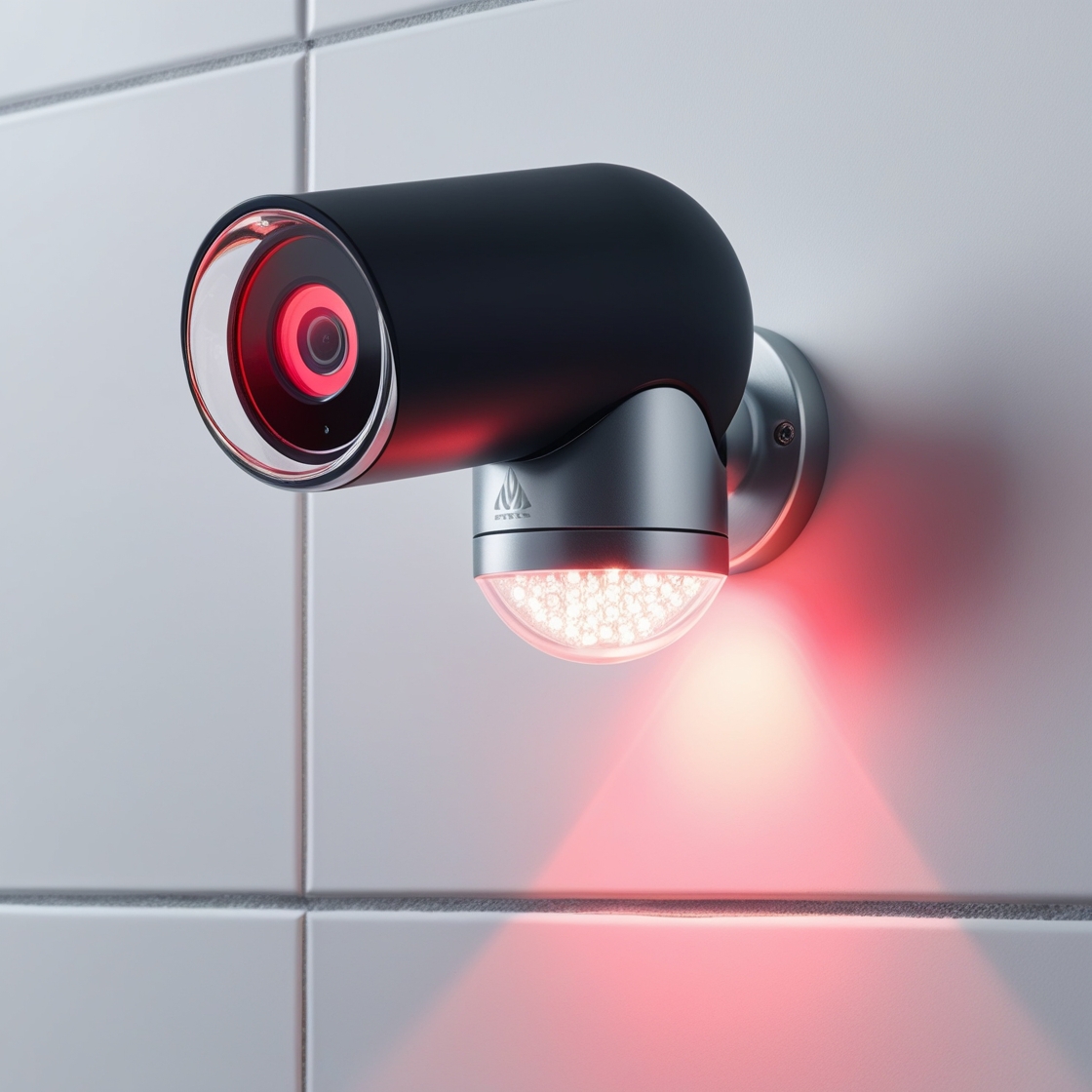Enhancing Night Vision Security
Infrared light technology has dramatically enhanced the capability of CCTV surveillance, especially night security. This in-depth guide considers the most essential aspects of infrared light technology for CCTV cameras. It elucidates the science behind how it works, the benefits of using infrared lights, considerations in choosing the right camera, and other practical insights.
What is Infrared Light?
One form of electromagnetic radiation is infrared light, whose wavelength falls between visible light and microwaves. Although the naked eye cannot see infrared light, electronic sensors can detect it, making it ideal for night vision in CCTV cameras.
How Infrared Light Works in CCTV Cameras
Infrared CCTV cameras are provided with IR LEDs illuminating the surrounding areas of the lens—IR LEDs direct infrared radiation onto the environment surrounding the camera location. When low light prevails in a room, it becomes automatically infrared. Therefore, the outcome of this infrared mode will be crystal clear, although in black and white; thus, the surveillance process will be uninterrupted by lights.
Benefits of Infrared Light for CCTV Cameras
Enhanced Night Vision
Infrared light allows cameras to take clear images of the activity even in the dark, providing 24/7 security.
High Image Resolution
IR light promotes image sharpness and quality, therefore, better differentiation between objects and people.
Increased Security
Infrared technology offers 24/7 monitoring in areas where cameras are installed. It becomes difficult for people to engage in criminal activities because they know that they are being monitored at any time, which can increase overall security.
Versatility
Infrared CCTV cameras can be used in residential, commercial, or industrial settings.
Cost-efficient
IR cameras reduce the necessity of further illumination and save energy costs, besides reducing light pollution.
Considerations for Choosing Infrared CCTV Cameras
IR Range
The efficiency of an IR camera is determined by its range, which may be as small as a few meters or as long as over 100 meters. You should pick a camera with a suitable IR range that fits your surveillance needs.
Resolution
High-resolution cameras let you see the details. Most cameras should have at least 1080p resolution.
Weather Resistance
The camera should be waterproof and withstand all the rain and extreme conditions outdoors.
Number of IR LEDs
The more IR LEDs a camera has, the better it performs at Night. More means better illumination and a more precise image.
Integration with Existing Systems
Ensure the infrared camera you buy can work with your existing CCTV setup for a smooth transition.
Table: Quick Comparison of Infrared CCTV Cameras
| Feature | Importance | Description |
| IR Range | High | Determines the distance the camera can see in the dark. |
| Resolution | High | Higher resolution provides clearer images and better detail recognition. |
| Weather Resistance | Medium | Essential for outdoor cameras to withstand various weather conditions. |
| Number of IR LEDs | High | More LEDs improve illumination and image clarity in low-light conditions. |
| System Compatibility | Medium | Ensures the new camera works with your existing security setup. |
Facts and Figures
IR Range: Infrared CCTV cameras usually have 20 to 100-meter ranges.
Resolution: IR high-quality cameras provide as high as 4K resolutions.
Lifespan of IR LEDs: LEDs of IR in CCTV cameras usually last up to 20,000 hours.
Temperature Range: Most IR cameras run smoothly between -30°C to 60°C.
Advantages and Disadvantages
Advantages
Continuous Monitoring: It operates effectively day and Night.
Enhanced Security: Provides a deterrent to criminal activity due to better night vision.
Cost Saving: Saves the utilization of supplemental lighting.
Versatility: Suitable for several environments and applications.
Disadvantages
Black-and-white Footage: The images captured through IR are monochrome. The quality of these images can be less sharp than that of the coloured footage.
Range: It depends on the number of IR LEDs and the range of IR.
Overexposure: Too many IR LEDs result in overexposure, thus decreasing the sharpness of the image.
Practical Insights for Users
Ideal Placement
Position the infrared cameras strategically to make maximum use of light. Some places include entry points, perimeter areas, and other locations where light is limited.
Maintenance
IR LEDs and camera lenses should be clear of dirt and debris so that video footage can be viewed.
Adjust Settings
In general, most infrared cameras include setting options such as adjusting sensitivity and IR intensity, and fine-tuning those parameters will help attain the best image quality feasible under your camera’s capabilities.
Integration with Alarm Systems
Most infrared cameras connected directly to your alarm system present live alerts based on actual feeds captured by the cameras- such a system in view promotes security.
Use of Several Cameras
With several infrared cameras, you can cover obstructions or the entire area you intend to cover. Surveillance of an area is adequate.
Frequently Asked Questions
Q: Can infrared CCTV cameras see through walls?
A: No, infrared cameras cannot view behind walls. They can detect the heat signature and present clear images in a low-light environment.
Q: Does an infrared camera work in the daylight?
A: Yes, infrared cameras work during the daylight hours, but the IR LEDs are usually active in low-light or no-light conditions.
Q: What distance does an infrared camera see at Night?
A: It all depends upon the number of IR LEDs and the camera’s specifications; it would work between 20 and 100 meters.
Q: Is an infrared camera hazardous?
A: No, it is not hazardous, as these cameras use infrared light that is not viewable to human eyes.
Q: Can animals detect infrared?
A: Some snakes and insects can, while most mammals cannot, and by mammals, I mean including man.
Conclusion
Infrared is essential in modern CCTV surveillance systems, significantly increasing night vision capabilities. To choose the most suitable IR-enabled CCTV cameras, you can understand how infrared technology works and determine critical aspects such as range, resolution, and environmental appropriateness. Infrared cameras continuously and reliably cover any type of surveillance, supporting various applications with higher security and comfort.
Using infrared light technology, CCTV cameras can offer superior surveillance, security, and safety in various settings. Choose the right IR camera for your needs and upgrade your night-time monitoring.

